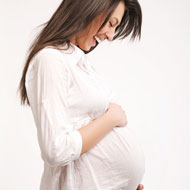Ectopic Pregnancy & IVF Treatments
IVF treatments are one of the last resorts that are available to couples that are trying to have children on their own but have been marred by some of the misfortunes of biology for a long time. In recent years, this type of infertility treatment has been subject to a lot of criticism from many quarters and, most importantly, there have been some concerns from the medical community about IVF as well.
The main concern today with IVF is not in its cost and accessibility but the dangers of multiple pregnancies that occur. Most IVF couples are women who are very close to the end of their viable reproductive years or well past it even and this brings forward many issues.
Most women that are past the age of 35 are at especial risk of miscarriage and ectopic pregnancies. Miscarriages in older women usually occur because of some chromosomal defect with the fetus that causes the body to reject it. This is a biological natural reaction and is actually good, in a sense. Ectopic pregnancies, on the other hand, are a problem with the reproductive system itself.
Ectopic Pregnancy Treatment
Ectopic pregnancy in IVF occurs again because of a woman’s age. When a woman passes a certain threshold, the cilia that line her fallopian tube – which guides the fetus into the uterus or womb – are non-existent or not efficient and this causes the fetus to grow in the fallopian tube. This is a dangerous situation as the fetus then secretes enzymes that allow it to burrow into surrounding tissue in search of a blood source.
This then causes the fetus to destroy tissue and sometimes cause bleeding into the peritoneum – a medical emergency. In the process of causing bleeding, the fetus is detached and destroyed so most ectopic pregnancies sometimes resolve without surgical intervention.
Heterotopic Pregnancies
An additional risk of ectopic pregnancy and IVF is the possibility of heterotopic pregnancies; this follows on further from the regular problem of an ectopic pregnancy with the possibility of twins developing ectopically. This is an even more serious condition that can only be controlled with an abortion. The areas of ectopic pregnancies occurring are mostly the fallopian tubes but can occur in the cervix, vagina, and in freak cases the abdomen. If the embryo is not destroyed then, sometimes, the pregnancy can be brought to term but the organ to which the placenta is then attached will also have to be removed.


